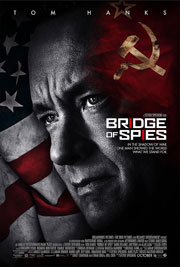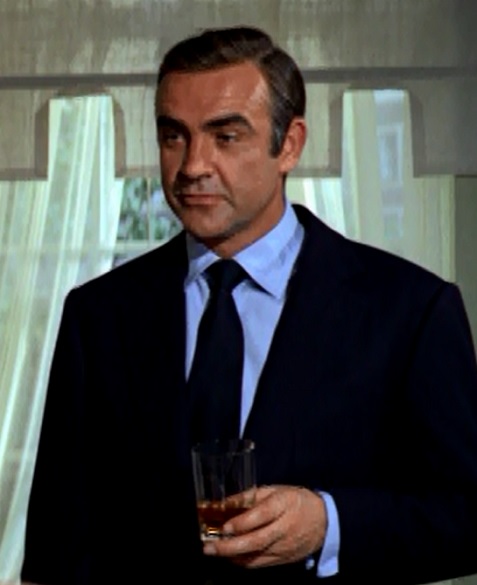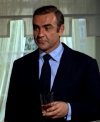Nostalgia Ultra: How two projects have perfectly recaptured the past
Posted by Rob Dean (08/05/2016 @ 12:05 pm)
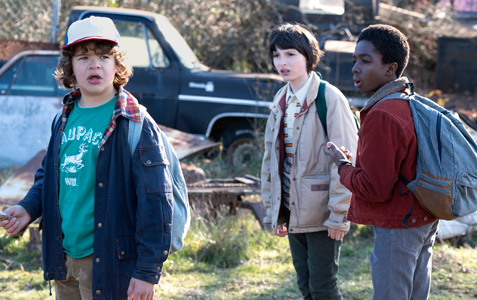
Nostalgia is a powerful force. When tapped into correctly, it compels people to gloss over the shortcomings of the era for which they pine. Whether it’s in politics or entertainment, people wish to hearken back to a time when they felt more positive, safe and secure; when joy was easier to come by and things weren’t so complicated. It’s usually associated with childhood because that’s before adulthood brought compromises and shades of gray. Suddenly, decisions had to be made with serious weight but also with implications that could stretch far into the future. This is why politicians always talk about going back to an idyllic past that never existed, and why studios crank out big screen remakes of various properties they hope people still get warm and fuzzy over.
But it’s a hard thing to recapture that feeling, to perfectly evoke those feelings of the past without feeling like a hollow retread. Artists with deft hands have to be able to take those old familiar stings and blend them with something new in a way that is seamless yet exciting. These projects must be comforting but also with a dash of the unexpected; alive in ways that aren’t incongruous with that nostalgia but also not purely a slave to those feelings either. Recently, two such projects have come along that have shown the way to properly revisit the past with an eye to the future. The Duffer brothers’ “Stranger Things” on Netflix and the Jeff Nichols’ film “Midnight Special” both call back to a specific attitude and time in pop culture (and in fact, it’s the same time for both of them), but they manage to do so masterfully enough that it feels both like going back to something familiar while moving forward into unexplored territory.
Read the rest of this entry »
Movie Review: “The BFG”
Posted by David Medsker (06/30/2016 @ 10:00 am)
Ruby Barnhill, Mark Rylance, Bill Hader, Jemaine Clement, Rebecca Hall, Rafe Spall, Penelope Wilton
Steven Spielberg
It’s easy to see why filmmakers are drawn to Roald Dahl’s work. He liked placing his stories in our world while adding something most definitely not from our world, with several of his stories coming with a new language. “The BFG” hits everything on the Dahl checklist, but it has trouble getting out of second gear. It’s sweet, it’s beautifully shot, and it sports another fine performance from Mark Rylance (who, last time he worked with “BFG” director Steven Spielberg, won an Oscar for his work in “Bridge of Spies”), but let’s point out the elephant in the room, shall we? Wes Anderson wrecked the curve for Roald Dahl adaptations with his stop-motion masterpiece “Fantastic Mr. Fox.” Following in that movie’s footsteps, even seven years later and multiple generations of technological advancement – something that is clearly prioritized here – “The BFG” didn’t have a prayer.
Sophie (Ruby Barnhill) lives in a London orphanage at a time that is at first undetermined, but we later learn is the early 1980s (Dahl’s book was released in 1982). She has trouble sleeping, and it is on a sleepless night that she sees a giant walking the streets. The giant (Rylance) sees that he’s been spotted and, out of concern that she will tell the authorities and make things difficult for him, he snatches Sophie and takes her to his home in a faraway land. Unlike the giants he lives with, he has no intentions of hurting her (the others love eating children, and would devour her on sight), and he even takes her as he goes to work catching dreams. The other giants are much larger and meaner than Sophie’s giant – whom she calls BFG after he remarked that he’d like to be known as the Big Friendly Giant – and they bully him relentlessly. Sophie encourages BFG to stand up for himself and comes up with a plan to put the giants in their place.
Read the rest of this entry »
Movie Review: “Bridge of Spies”
Posted by David Medsker (10/15/2015 @ 12:00 pm)
Tom Hanks, Mark Rylance, Amy Ryan, Alan Alda, Austin Stowell
Steven Spielberg
Certain things go together. Peanut butter and chocolate. Jack and ginger (yes, ginger, not Coke. Try it). “Bridge of Spies,” on the other hand, is proof positive that Steven Spielberg (the film’s director), and Joel and Ethan Coen (the film’s co-screenwriters), absolutely do not go together. In fact, this would have been a much better movie had the Coens directed it themselves. There are these subtle, effective and surprisingly funny moments that are clearly the Coens’ work, and then Spielberg steps in and drowns everything else in syrup. That it remains a watchable movie is in spite of Spielberg’s efforts, not because of them.
It is the late ‘50s, and Cold War paranoia is at an all-time high. The FBI captures Brooklyn resident, and Russian spy, Rudolph Abel (Mark Rylance), and the government assigns a local law firm to represent him. The case is assigned to James Donovan (Tom Hanks), even though he is primarily an insurance lawyer. James quickly realizes that no one is interested in giving Rudolph a fair trial, which only leads James to fight even harder to get him one, regardless of the hardships that may mean for him and his family. He loses, but successfully lobbies to pardon Rudolph from getting the death penalty, arguing that the U.S. would be wise to keep him around as a bargaining chip.
Sure enough, James proves to be right, as American pilot Gary Powers (Austin Stowell) is captured after his U-2 spy plane is bombed out of the sky by the Russians, and he is sentenced to hard labor in a Russian prison. The U.S. government asks James if he can negotiate an unofficial trade with the Russians to swap Rudolph for Powers. James is game, but he wants to sweeten the deal by also getting the Russians to convince the German Democratic Republic – who are building the wall between East Berlin and West Berlin as these events are taking place – to also release Frederic Pryor (Will Rogers), an economics student that the GDR has falsely accused of espionage in the hopes that they will get invited to the political big boy table.
Read the rest of this entry »
007 One by One: “Diamonds are Forever”
Posted by Bob Westal (07/10/2013 @ 5:28 pm)
Bullz-Eye continues its look back at every James Bond film, 007 One by One, as part of our James Bond Fan Hub that we’ve created to celebrate the 50th anniversary of the first Bond film.
It’s Vegas, baby, for James Bond, and he’s played by Sean Connery for the last time (until 1983). The jokiest and the most violent of the Bond films up to that point, it’s no one’s favorite 007 entry – and it’s a lot of people’s least favorite – but we still think it’s got way more panache than many of the films that followed. It’s…
“Diamonds are Forever” (1971)
The Plot
Diamond smuggling turns out to be, naturally, only the tip of the iceberg as a graying Bond (Sean Connery) unravels a chain of deception that leads him to a Las Vegas-based ultra-reclusive mega-tycoon (Jimmy Dean), and then onto 007’s not-actually-dead arch nemesis, Ernst Stavro Blofeld (Charles Gray). It turns out that killing Bond’s wife simply isn’t enough for the social climbing super-villain; he’s once again making 007’s life hellish while also having the bad manners to peddle thermonuclear supremacy on the world market. Bond, meanwhile, is nearly wearing out his license to kill.
The Backstory
Though it’s an underrated film and beloved of many serious Bond fans, 1969’s “On Her Majesty’s Secret Service” with George Lazenby was deemed insufficient as a blockbuster. It did well enough abroad, but it’s all-important American grosses was about half that of earlier Bond entries. By 1970, Lazenby was already one for the “where are they now?” columns.
A replacement was needed, and so was a big hit. Stolid American heartthrob John Gavin (“Psycho“) had been contracted as a fall-back Bond, but moguls Albert R. “Cubby” Broccoli and Harry Saltzman set their sights on the one actor alive least interested in stepping into the very big shoes of Sean Connery – Sean Connery. While the Scottish unknown-turned-superstar has always insisted he was very grateful for his Bond stardom, to all appearances, Connery was over James Bond — now and forever.
On the other hand, we all have our price. Connery’s was £1.2 million – quite a lot of money in 1970 and enough cash for the actor to start his own charity, the Scottish International Education Trust. To sweeten the deal, United Artists also allowed Connery the chance to take the creative lead on two of his own movies. The understanding was, however, very clear that Connery would never again play Bond…for the Broccoli and Saltzman’s EON team, at least, that turned out to be true.
Read the rest of this entry »
Posted in: Entertainment, Movies
Tags: 007, 007 50th anniversary, 007 films, 007 gadgets, 007 movies, 007 One by One, Albert R. "Cubby" Broccoli, Bambi and Thumper, beautiful Bond women, Bernard Lee, Blofeld, Bond babes, Bond films, Bond gadgets, Bond girls, Bond movies, Bond one by one, Bruce Cabot, Bruce Glover, Charles Gray, Cubby Broccoli, Desmond Llewelyn, Don Black, Downtown Las Vegas, EON Productions, Ernst Stavro Blofeld, Fremont Street Experience, Gert Fröbe, Goldfinger, Guy Hamilton, Harry Saltzman, Howard Hughes, James Bond, James Bond 007, James Bond 50th anniversary, James Bond actresses, James Bond babes, James Bond blog, James Bond cars, James Bond craze, James Bond franchise, James Bond girls, James Bond movies, Jill St. John, Jimmy Dean, Joe Robinson, John Barry, Lana Wood, Las Vegas, Leonard Barr, Lois Maxwell, M, Macbeth, Marc Lawrence, Miss Moneypenny, Mr. Kidd, Mr. Wint, On Her Majesty's Secret Service, Paul Williams, Peter Frank, Playboy Club, Plenty O'Toole, Putter Smith, Q, Q branch, Sammy Davis Jr., Sean Connery, Sid Haig, Sidney Lumet, Steven Spielberg, Ted Moore, Tiffany Case, Tom Manckiewicz, Tracey Bond, Valerie Perrine, Willard Whyte
The Light from the TV Shows: A Chat with Julian Jarrold (HBO’s “The Girl”)
Posted by Will Harris (10/10/2012 @ 10:03 pm)
Given how much media attention has been drawn by the upcoming Alfred Hitchcock biopic starring Anthony Hopkins, it’s no wonder that some may see HBO’s upcoming movie, “The Girl,” which debuts on Oct. 20, to be a pretender to the throne. In fact, they’re both perfectly viable entities in their own right, each covering a different aspect of the director’s career. Hopkins will be playing Hitchcock as he’s in the throes of making “Psycho,” whereas “The Girl” finds Toby Jones’s version of Hitch as he’s obsessing over Tippi Hedren (played by Sienna Miller) during the filming of “The Birds” and “Marnie.” Bullz-Eye caught up with Julian Jarrold, director of “The Girl,” just before a panel for the film at the summer Television Critics Association press tour, during which time he chatted not only about his look into the darker side of Hitchcock but also some of the other films and television efforts he’s tackled in his career to date.
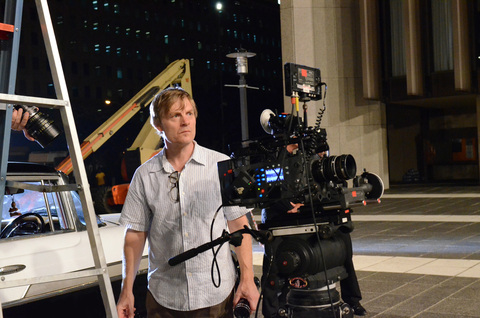
Bullz-Eye: How did “The Girl” land in your lap? Or did you go looking for “The Girl”?
Julian Jarrold: No, it was sent to me ages ago, and…it was a little bit more based around the making “The Birds” and “Marnie,” but obviously it was still an exploration of this relationship. The writer (Gwyneth Hughes) had done quite a lot of research and come over here and met Jim Brown, the assistant director, and Rita Riggs (wardrobe supervisor), and Tippi, obviously. So he’d kind of pieced together this sort of fascinating script, and I loved Hitchcock, but I didn’t know this at all, so it was a bit of a shock, actually, to read it. [Laughs.] I knew he was odd, but I didn’t know he was that odd. Yeah, it totally changed my view of Hitchcock. Actually, what was fascinating was…I knew “The Birds” and “Marnie” and “Vertigo,” and they’re strange films. You kind of wonder where they’re coming from. And then finding out about this story, you certainly go, “Ah, I see where he was coming from…and where his personal obsessions are and his attitude to women and everything.” So it sort of illuminated all that. Which was very interesting.
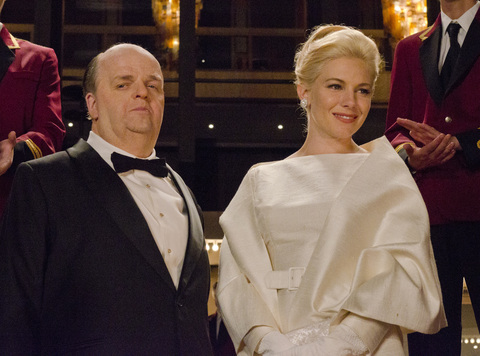
BE: Tippi Hedren is here at the TCA tour, so presumably she’s supportive of the film, but how interactive was she you were making it? Did you speak with her in advance?
JJ: Well, no. I mean, she obviously spoke at length with the writer, and Sienna met her. But she didn’t come on set. I think she read the script. It’s obviously difficult when someone’s making a film like this. How do you compute that? Because it’s 90 minutes revolving around her life. But she said she saw it recently, and she seemed to love it. She saw it with her kids, Melanie (Griffith) and everybody, and it seemed to go down okay. But it’s difficult. It must be a painful, difficult thing to look at. You know, she had such a complex relationship with Hitchcock. It was daunting, because you mustn’t judge that. I wanted to show the sunny side of the relationship, where there was a sort of optimism at the beginning and he was such a fantastic teacher, but then how it changed and darkened and was abusive, really.
Read the rest of this entry »
Posted in: Entertainment, Interviews, Movies, News, Television
Tags: Alfred Hitchcock, Anonymous Rex, Anthony Hopkins, Appropriate Adult, Boy George, Brideshead Revisited, Crime and Punishment, Crispin Glover, Culture Club, David Peace, Dominic West, Fred West, Gwyneth Hughes, Infamous, James Marsh, Jim Brown, Julian Jarrald, King Lear, Kinky Boots, Mad About the Boy, Marnie, Melanie Griffith, Menahem Golan, Neil McKay, Psycho, Red Riding, Rita Riggs, Sienna Miller, Steven Spielberg, The Birds, The Girl, The Light from the TV Shows, Thomas Hardy, Tippi Hedren, Toby Jones, Vertigo, Will Harris



